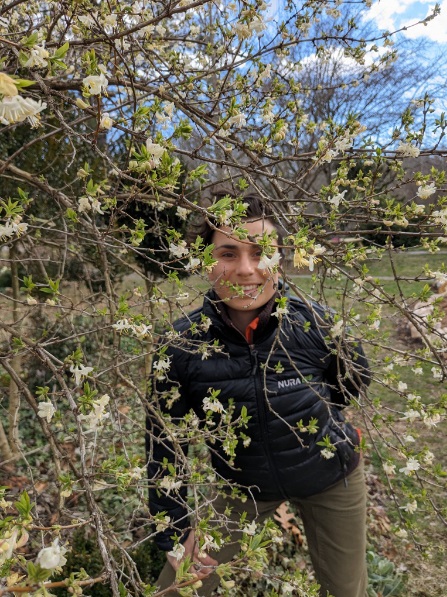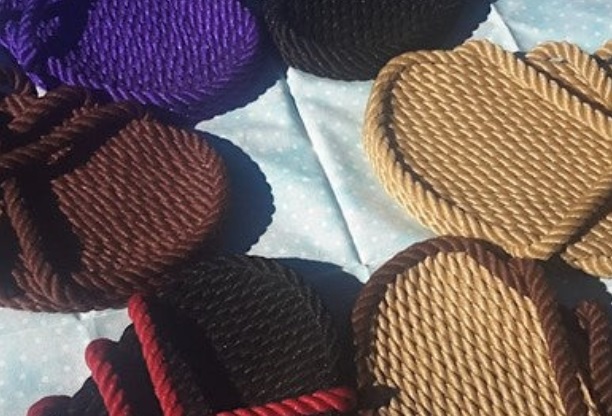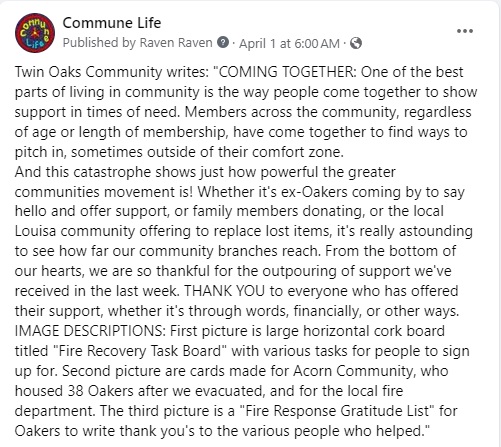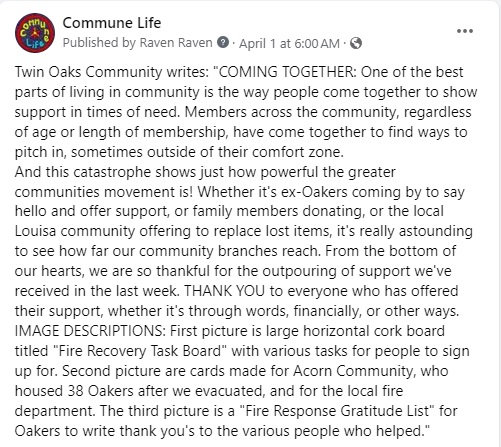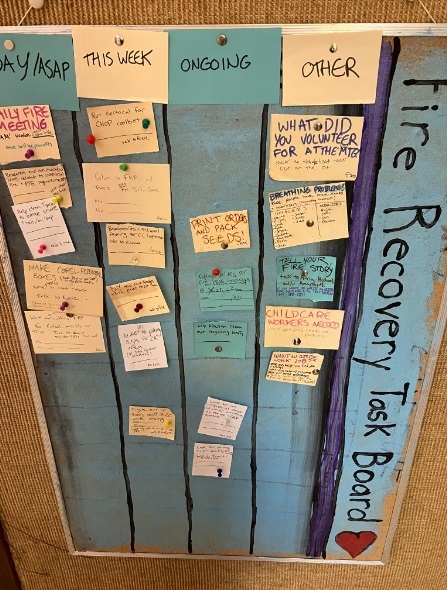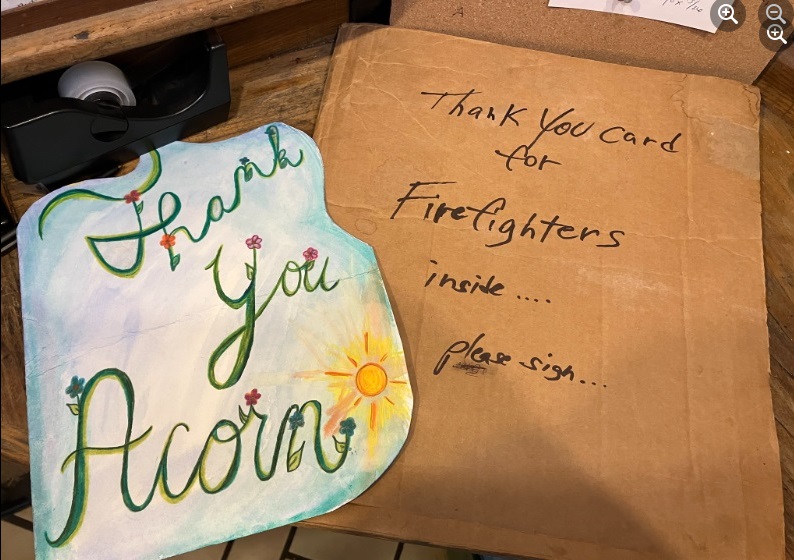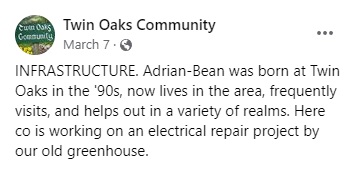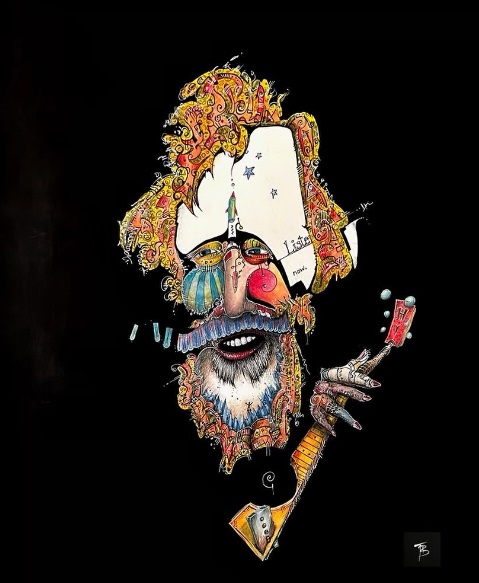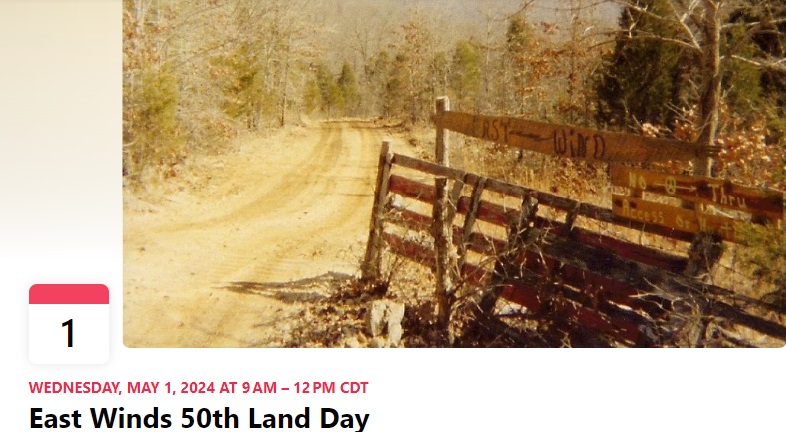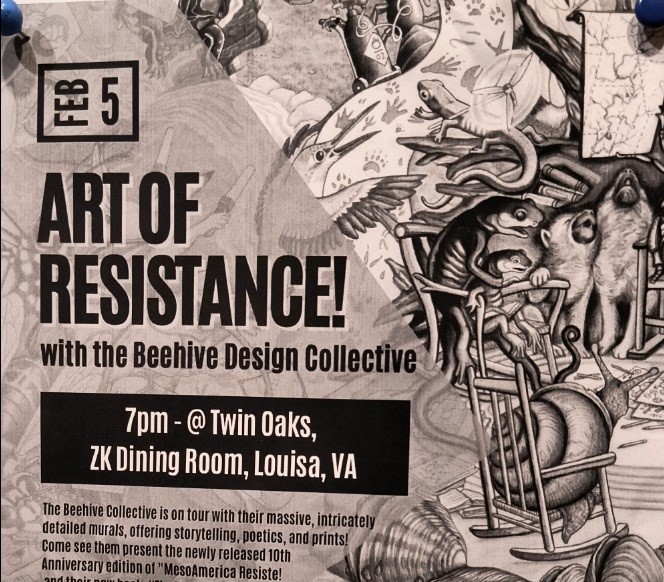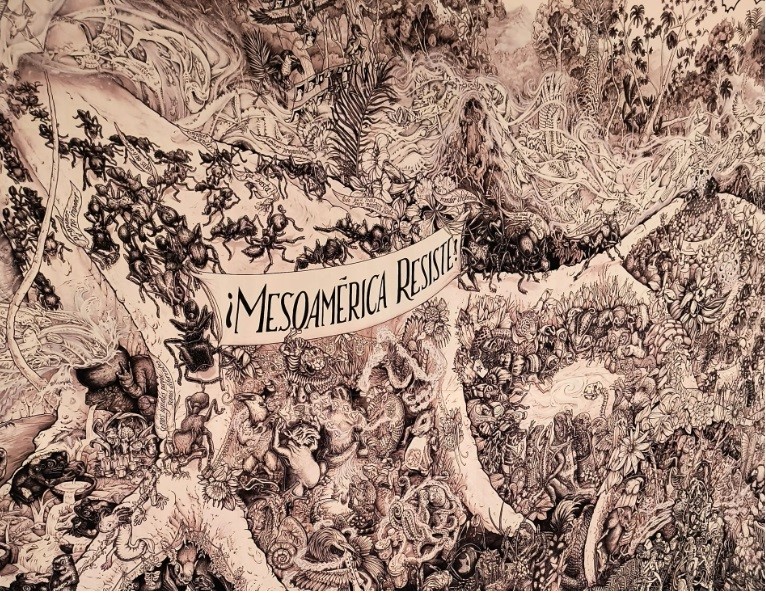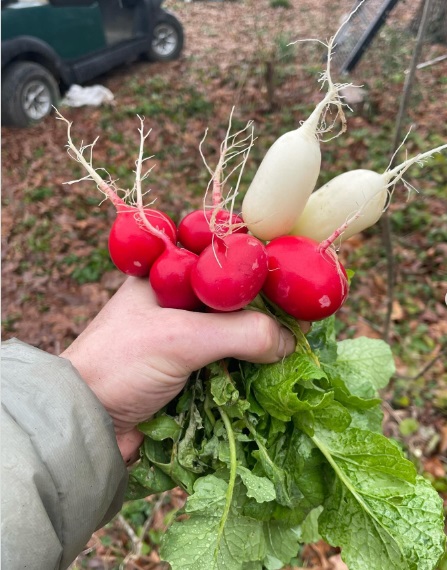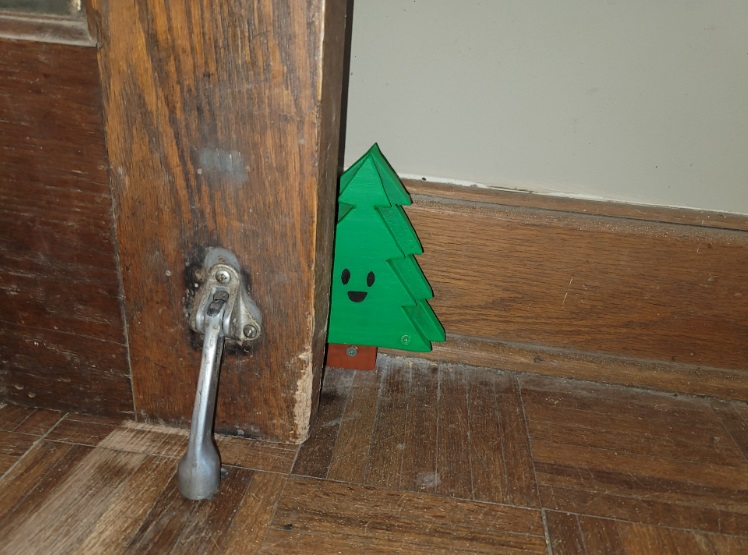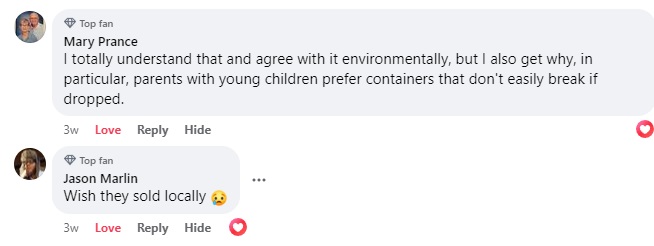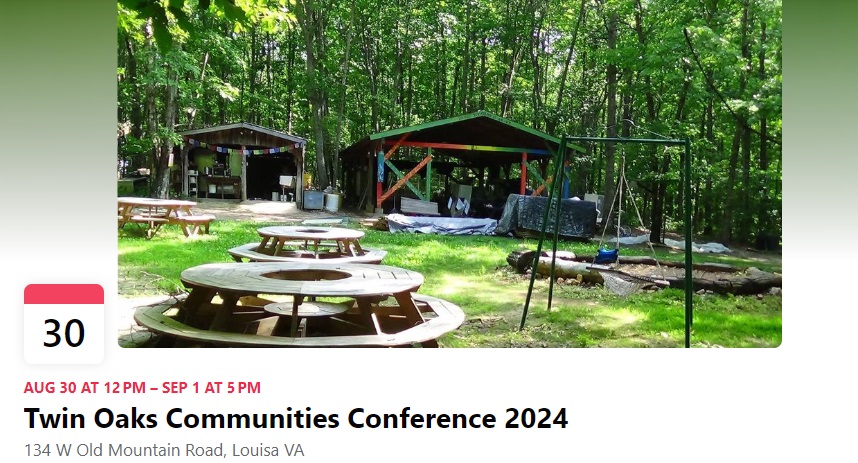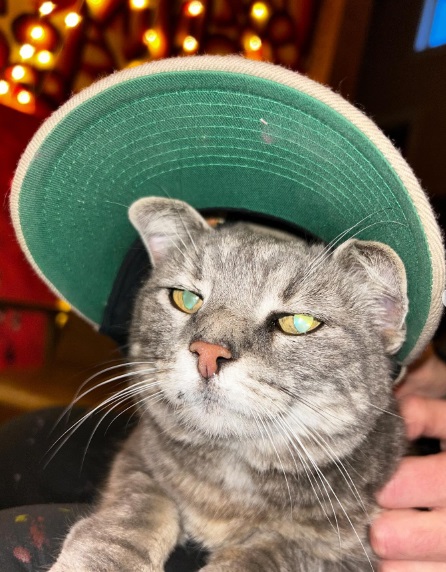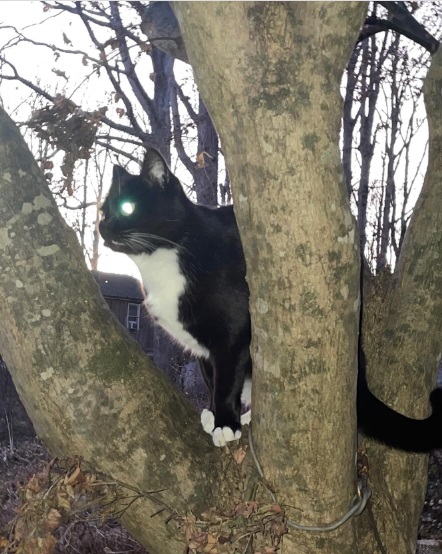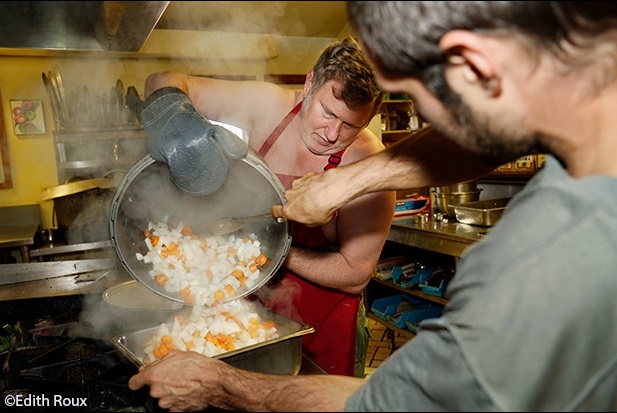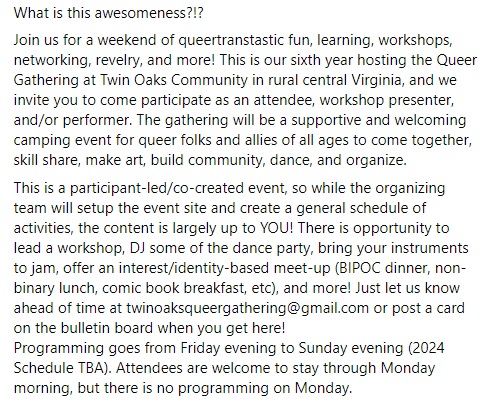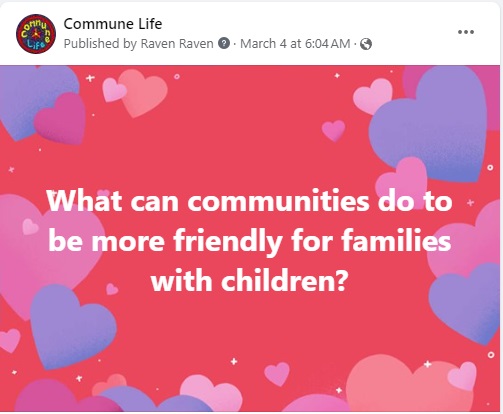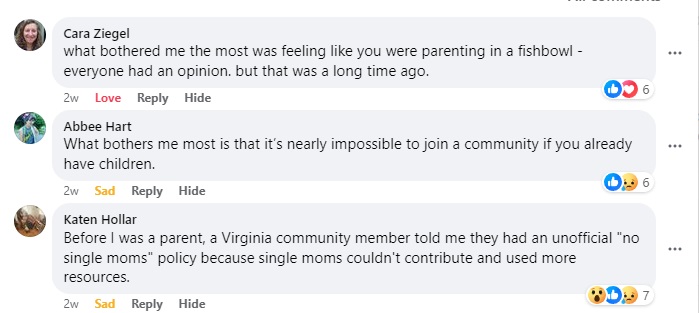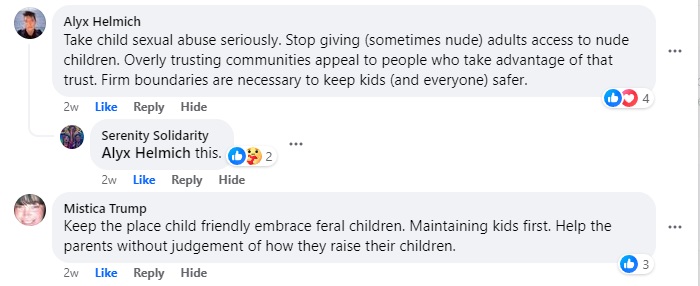from
The Leaves of Twin Oaks #132March 2024
Fire at Twin Oaks by Anna
On Wednesday afternoon March 20th 2024, tragedy struck Twin Oaks when a nearby wild fire spread to our property, completely destroying our warehouse complex, our sawmill and our conference site. Over 200 acres burned through the night, forcing the entire community to evacuate. Luckily, no people, pets or residences were damaged. While we do have a disaster fund, the damage we’re facing is devastatingly huge. The structures destroyed include our large warehouse complex, our sawmill, 4 vehicles, our kilns, a hoop-house, a functioning outdoor kitchen and pavilion at the conference site, countless storage structures including 3 barns and 2 trailers, and many other small structures. We are estimating a loss of more than a million dollars. This loss also means the end of our 57-year old hammocks business, which was Twin Oaks’ beating heart for many decades since its foundation in 1967. Other Twin Oaks businesses experienced losses as well, but will most likely recover.

Our industrial center, Emerald City, is on fire
We have yet to understand the full scope of this tremendous loss, and are grieving the parts of our community that have been destroyed. If you would like to donate to us to support the community financially, we would greatly appreciate it. Donations will go towards infrastructure repairs and other expenses addressing the financial loss of the hammocks business.
You can donate directly to the community’s bank account by clicking the following link:
tinyurl.com/twinoaksfire
Personal Account by Jane
This is a personal account of one member’s experience of the fire on March 20th. This is based on my recollection of events, as well as voice memos I took during this time. So it is possible I am missing details or misremembering events.March 20th started like most Wednesday’s for me–waking up early to drive to Charlottesville. I work at the Cville Ballet, and I spend most Wednesdays managing the costume inventory for the upcoming student showcase. When I left, I was looking forward to my RET meeting (Racial Equity Team) to debrief some events in the previous few days. (Spoiler alert, we didn’t end up having that meeting.)
As I got off the highway and drove down Shannon Hill Road around 3:45, I started to see smoke in the distance. Instantly my mind jumped to the previous brush fire that happened back in September.

Vehicles and buildings destroyed
As I got closer, I realized it was coming from West Old Mountain Road. Out of curiosity, I turned left instead of continuing to Yanceyville Road. As I drove, I remember vividly when I saw the fire, blazing orange just past the driveway at EC. I screamed, hitting the brakes. It was a low burning fire, but suddenly a gust of wind came and blew the flames up towards the leaves in the trees. Once that happened, I drove away, and parked at the frisbee field to recollect myself. I can see in my call history I called 911 at 3:58, and according to other Oakers, EC was on fire by 4:18.
It was definitely weird to pull up to the courtyard and see the swarms of people with go bags and pet carriers. I take class at CBA, so all I had was my leotard, tights, and dance shoes. Thankfully I had my laptop and wallet, but my mind flashed to the precious items in my room like my medication, gifts from my deceased grandmother, and my passport. Would I be allowed to go up and get them?

Destroyed wood-working machine with ruined workshop / warehouse in background
There was lots of milling around, and at some point we were moved across the road. At this point I had gone to move a car, and when I came back, my bag was missing. In the end it was my Twin Oaks family that moved it, but the stress of the day overcame me and I started crying on the hammock’s loading dock. All I had was my phone and the clothes on my back! Thankfully I found Scott, my partner, and Anna and Michael, my two dear friends, and they helped calmed me down. Once we got to the other side of the road, my missing bag was found.It was hard to pass the time. At one point my partner and I went for a walk down by the river, and when we came back, everyone was gone! It was the first time I felt hopeful, that maybe things were turning around. When we got back to the courtyard though, I had a mission. The threat of evacuation still loomed, and I needed my medication. Other Oakers had been stopped from going up the hill, but I was determined. Kathryn was taking roll of everyone, so I informed her that Scott, Khaleesi (Scott’s dog), and I would be going to Kaweah for my meds. Thankfully, we made it without incident, and good timing- when we returned to the courtyard, the police were instructing us to evacuate.
I knew I wanted to be with people I was closest to, but what about Khaleesi? Where would we bring the dog? In a moment of panic I said “I’m not evacuating! I don’t care!” Adder and Hawina, two members with more sense than me at that moment, told me I would evacuate with everyone because not doing so would be risking my life. I’m glad they were there to talk some sense into me. We debated over the various locations, and when I heard Kathryn shout “two more spots at acorn!” I said “me and Scott and Khaleesi!” We all climbed into a van with a motley crew of Oakers: McCune, Eve, Steve, Shal, Valerie, Scott, me, and Khaleesi the dog and Mitzi the cat. Valerie, Scott, and I sat on the floor of the trunk, and tried to keep ourselves occupied with jokes.Once we got to Acorn, I got us a room in Heartwood. There were multiple other dogs and cats in the steel building, and I knew Khaleesi would not be able to relax. I had a good chat with Ira and Scott-Acorn, who were just as incredulous as I was that the whole thing was happening. Taiga, Anande, Telos, and others from Acorn helped us get set up in a room and showed us where food could be found, which I really appreciated. I didn’t realize until we got to Acorn around 8:30 that I hadn’t had lunch or dinner that day.
I fell asleep pretty quick, and when we woke up, discovered that the evacuation order had been lifted around midnight and everyone else went home. At first I was excited, thinking the drama was finally over, until I checked my phone and saw the three different emails saying the same thing: “EC is gone”. I couldn’t really process what that meant, until I saw it for myself later that day. What do you mean, it’s gone? How is that possible?

Ropemaking Twister ruined
Once we got home, I was in a bit of a daze. I was supposed to be doing rax desk (customer service for SESE wholesale) but with the internet destroyed, it was impossible. Thankfully, I was able to use a hotspot and email customers with outstanding wooden rack orders, and explain that they wouldn’t be getting racks anytime soon. It wasn’t until later that day that I realized our digital archive machine was hosted at EC. I frantically texted Adder, the IT manager, to see if anything had been saved- he responded no, I’m so sorry, but the database is gone. It was gut wrenching to me- the thing I was most proud of in archives, gone in an instant. Thankfully, all the scans and physical papers were backed up and safe, but the servers and software to read those papers and my cataloging system is gone.
I’ve been mostly trying to get back into my normal routines. I brought my goddaughter and main primary kid, Xena, to the library two days after the fire. It was a great way to escape from the stress for a few hours, and pretend things were the same. And I’ve been doing my k shifts, managing archives, and shipping orders, just like I did before the fire. But then it’ll pop back into my head, or I’ll smell smoke from a toaster, and the memories come flooding back. I moved to Twin Oaks 9 months ago, and I wonder now- when I reflect back, will I even remember what life was like before the fire? Or will it be a hazy memory, life before the end of so much we took for granted here? Only time will tell.












